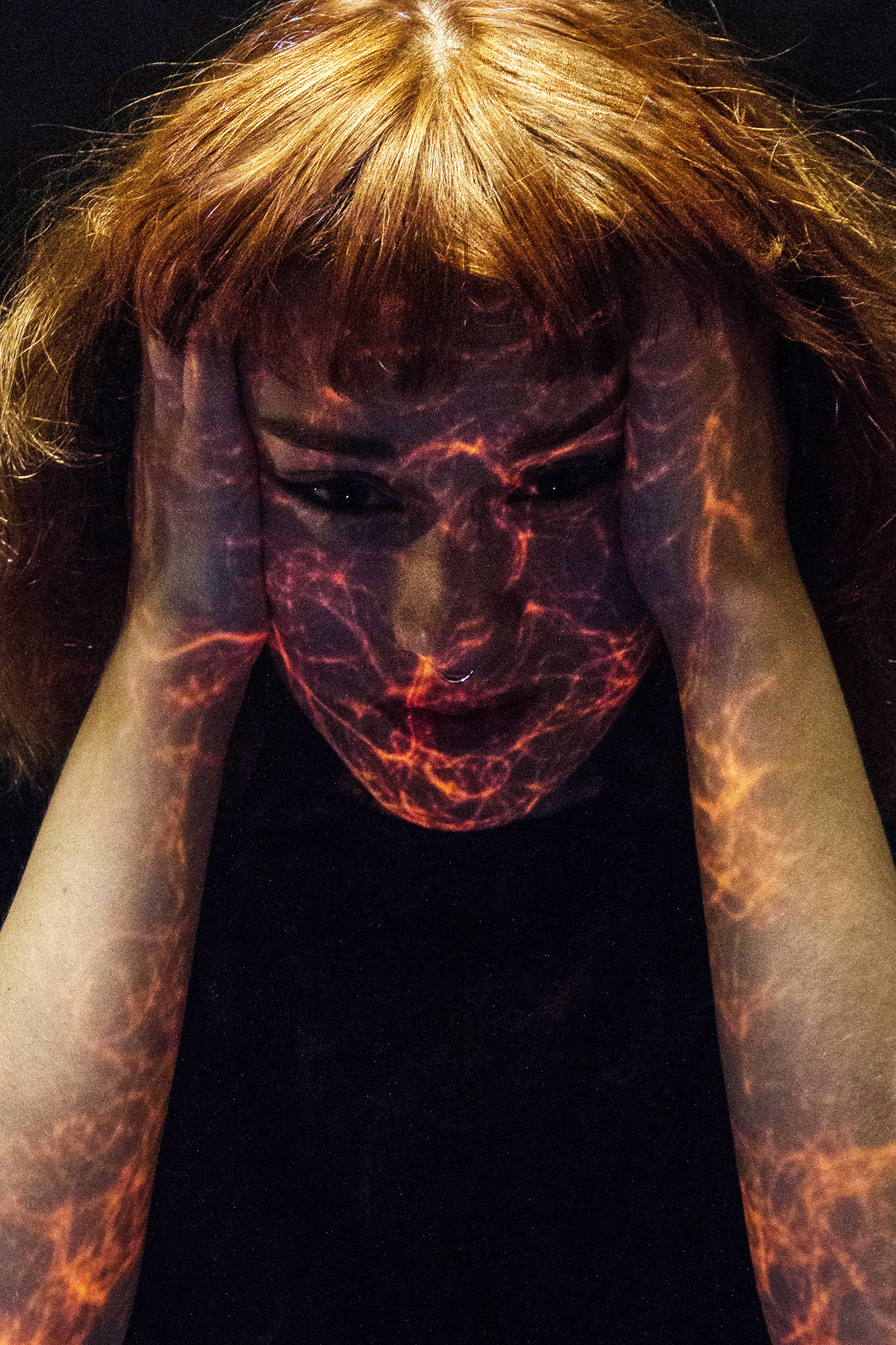Inside (BDD)
DOOAA NADEEM
‘Inside’ is a project highlighting the topic of 'mental health', visually exploring and showcasing the feelings and sensations of a patient suffering from BDD (body dysmorphic disorder). It consists of a code made in P5 JavaScript projected on to a face and documented through photography and video.
Background
While the course of my research on my earlier projects, I was very intrigued by the ‘Self (Miss) Representation’ case study of Amalia Ulman Excellences and Perfections, through which I explored and worked on ideas on ones perception of themselves, and the redefinition of self-identity through the Internet. Being initially a fine art student interested in portraiture I worked on showing strong inside emotions through the faces of women in the form of Gifs. My research on May Waver and Rafia Santana, young digital artists, trying to explore sex, gender, identity and relationships with a range of digital media, led me to studying works from the ‘Body Anxiety’ series, which was an online exhibition of 21 female artists, curated by Jennifer Chan and Leah Schrager. Their work got me wanting to work around anxiety disorders out of which was BDD (Body Dysmorphic Disorder), which I based my project on. (BDD) is an anxiety disorder that causes a person to have a distorted view of how they look due to genetic reasons or chemical imbalances in the brain.
Out of the different things a BDD patient feels I decided to work on the most visually interesting one. From the different cases I studied including BDD studies by Veale and Riley, I came across this case in which the patient starts to see veins appear on her face in the mirror, which weren’t really present. I wanted to take this idea forward as ‘Projection Mapping’ at one of my lab exercises for the Audio Visual Computing module intrigued me and I wanted to work with projection mapping on the human body. I researched on Kat Von D’s collaboration with the Wildbytes studio and the ‘Connecting Colors’ campaign and how the projections were interacting with the face. I had to start by creating the animation code of veins followed by face detection which due to being new at coding I wasnt be able to do in the given time, so I decided to take pictures and video recordings of my project instead of making it live projection mapping. I came across the ‘SVA Poster series’ by Stefan Sagmeister, which were different portraits of people, each saying something through the pictures, which inspired me to take this idea forward.
“Connected Colors” Projection Mapping by media artist Nobumichi Asai
Decisions and Problems
I started by making the code in P5 in form of a tweet as I wanted to show the gradual movement of veins coming in and filling the body with thick bundles.I wanted to give the code a realistic feel however the code looked more geometrical and the veins were not flowing randomly.
Link to code http://igor.gold.ac.uk/~dnade001/veins/
Experiments with veins
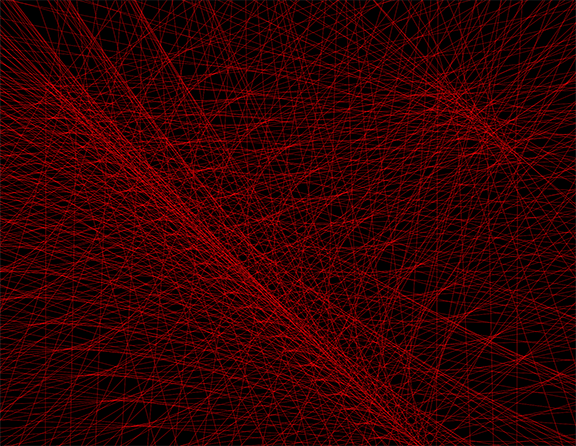

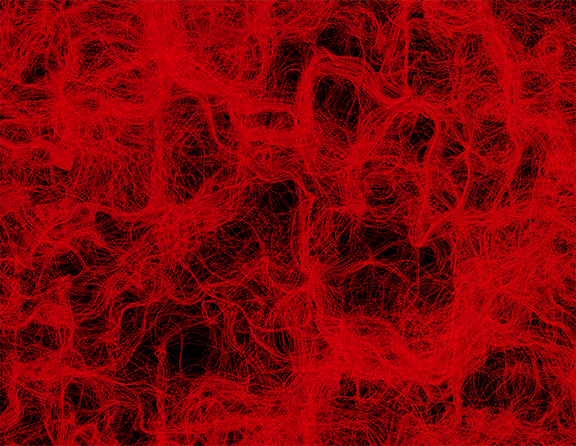

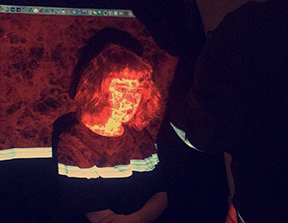

I took inspiration from Daniel Shiffman tutorials on perlin noise and created a bundle of lines that appear randomly in form of vectors in different directions, which was very challenging for me being new at coding. This gave the lines the random branches and curves they should have in order to replicate real veins. I kept the background of my code back as its dark inside the human body and gave different colors of red to the veins to give them a three dimensional feel so each vein shows even in the bundle while coming on top of one another. The next thing I had to do was photograph and record my code on the human body making sure the veins come on the skin and not on the hair or background as there was no face detection. This was something very tricky and I started by trying to create a way to drag the mouse to create a shape on the codewhere the veins would appear only. I tried very hard to pull this off however the code wasn’t working like I wanted it to so I tried making the mouse create a shape that turns the code black so that I could get rid of the veins from the background and hair while projecting, at the end which I had to manage with light while photographing.
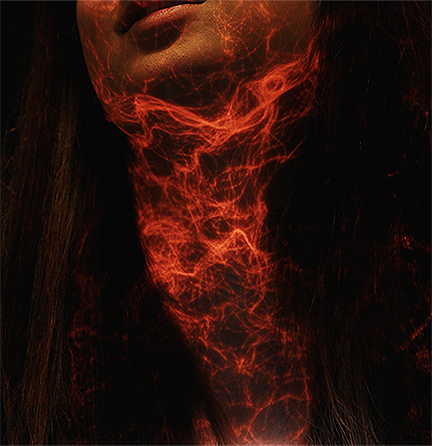

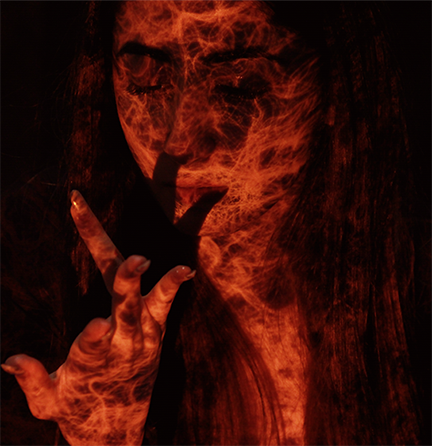

I decided to photograph the face and the hands as I was highlighting a mental disorder and wanted to work with the feelings and expressions trying to tell a story. I wanted to show the four stages of the patient when the veins started to appear and go up to when they are too much causing her to scream showing her mental state, to her accepting the situation and resigning to it, as it takes long for cognitive therapies to work for the disease to cure. I created a top light so it cuts the light of the code on the hair and keeps the face dark for the code to show. I balanced light on all sides for the code to be visible as well as the models features. Due to less light in the room, moving lines started appearing on the video, which was difficult to overcome as more light would cut the code projection. I learned how to deal with these technical problems by adjusting the ISO and aperture, which was very difficult to handle and despite everything had to settle for the less lines and more veins showing as couldn’t have both. The red veins showing on the computer screen had a glow to them when projected on human skin. I tried adjusting light by making it more dark which even though did not make the glow go away, but looked more closer to what I wanted as it gave the veins a 3D illusion.
Testing with more light for the video
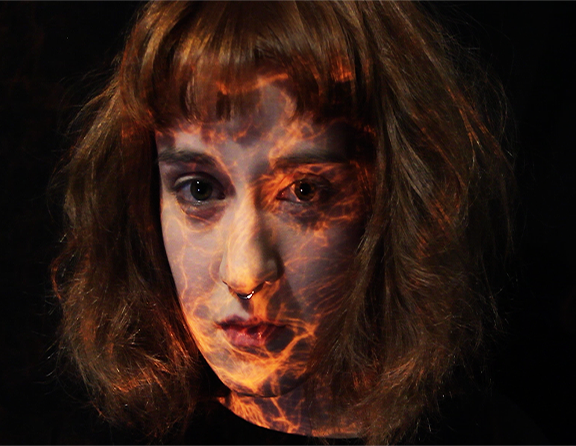

Audience and Success
I wanted the audience to experience the ‘creepy’ feeling of veins traveling through their body looking at the video as it proceeds gradually and the images to be strong, showing my code in detail as well as highlighting the idea. The project attracted a lot of people as intended due to the powerful visual imagery. Most people understood what was happening in the images however did not know what BDD was for which I had to stand there to explain why the veins are appearing and what the project is about. The veins were said to be confused with fire in the last picture of the series by two of the viewers, as the glow in the images on prints did not turn out to be how it was on the screen. I got some interesting Ideas and feedback on my photography by my tutors like projecting the code on different parts of the body and create the human figure with the prints. I thought I could have also tried making the video longer and shown on a larger screen on the whole body to make a bigger impact. The project on the whole however was very successful, as people loved how the veins interacted with the face gradually filling it up. Everyone appreciated the portraits and found them to be very powerful despite not knowing the disease yet understanding the basic concept. I feel that if I had more time, I would have worked on the things I felt were causing problems. I would take this project as a great learning experience and take this feedback to do more projection mapping with face detection in the coming years.
link to my code http://igor.gold.ac.uk/~dnade001/finalveins/
Series of photographs from the exhibition












































































